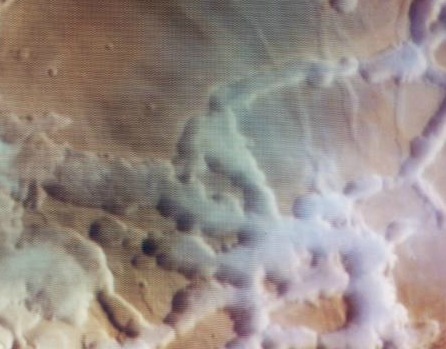A team of planetary scientists from Tucson, Arizona have identified at least two locations on Mars that may have once been ideal environment for simple microbes. The sites are much younger than the Noachian formations associated with most of Mars’ ancient, wetter past:
The troughs were discovered at Noctis Labyrintus, also known as ‘the labyrinth of the night’ – a region that is noted for its system of deep, steep-walled valleys. “We discovered these locations that show many kinds of minerals that formed by water activity,” says Catherine Weitz, lead author of a paper featured in the journal Geology and a senior scientist at the Institute. “The clays we found, called iron/magnesium [Fe/Mg]-smectites, are much younger at Noctis Labyrinthus relative to those found in the ancient rocks on Mars, which indicates a different water environment in these depressions relative to what was happening elsewhere on Mars.”
The circumstantial evidence for life on Mars has grown fairly interesting. It seems a reasonable speculation that microbes might be passed back and forth between early earth and Mars and that some of those microbes could survive on the surface of the smaller world. Whether that happened or not, or how the organisms fared afterward, is a big question.


Fascinating.
Early morning mist in the Noctis Labyrinthus… someone bring Carl Sagan back to life so he can turn those words into poetry.
And are all of those little valleys are named after places in the Edgar Rice Burroughs Queen of Mars series?
As a longtime resident of that pretty nice southwest city (and a professional proofreader), allow me to point out that it’s spelled
Tucson